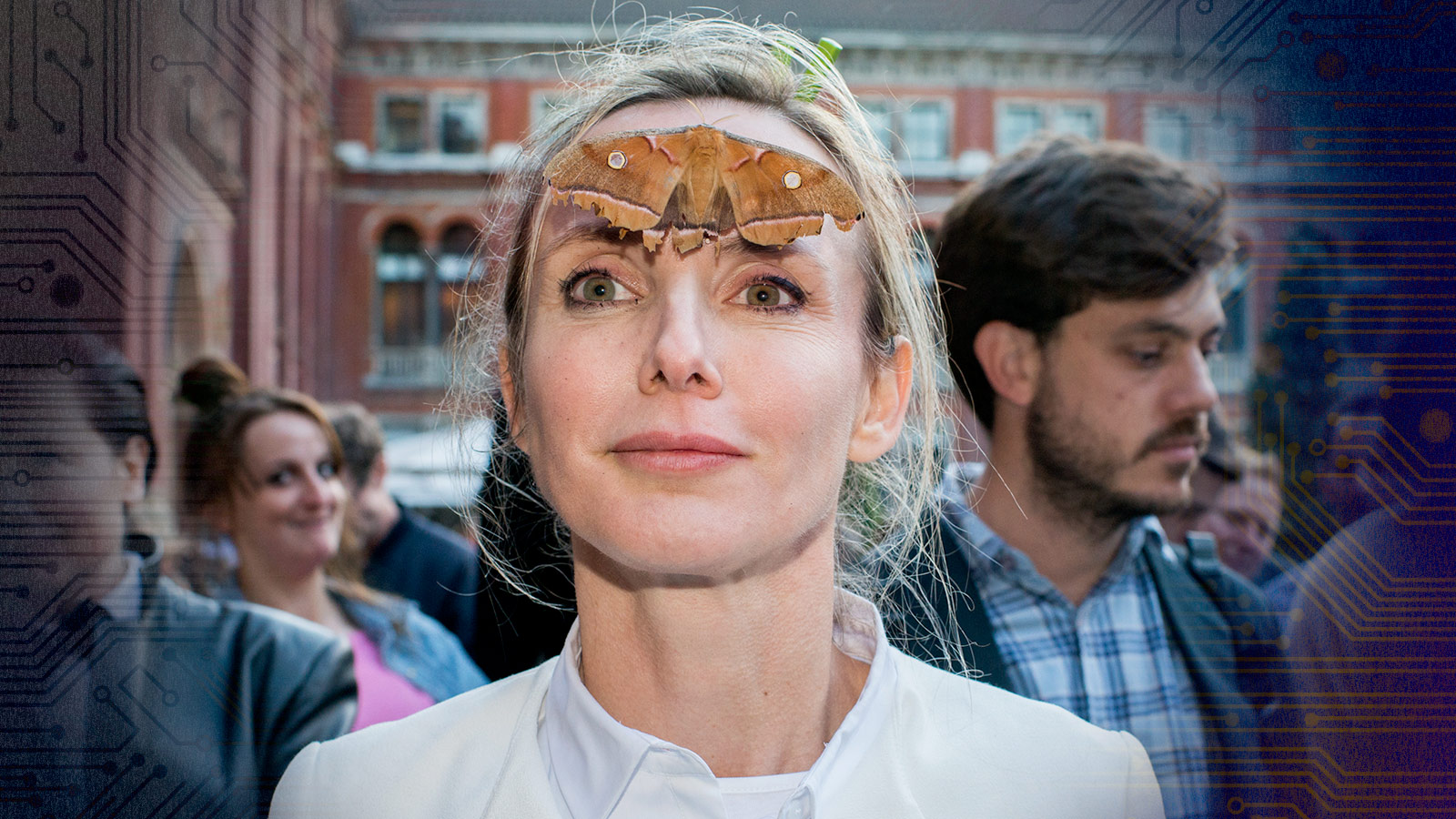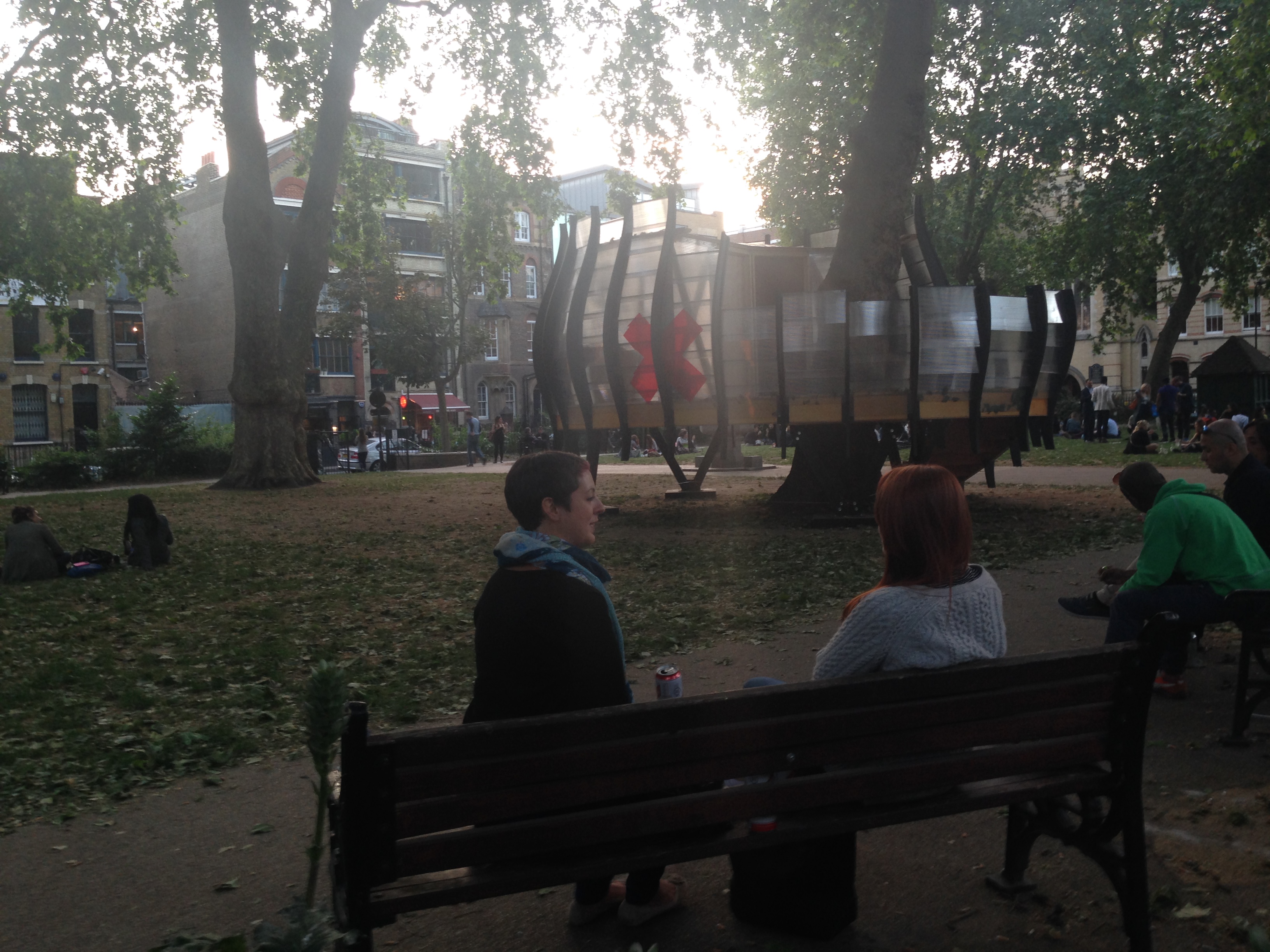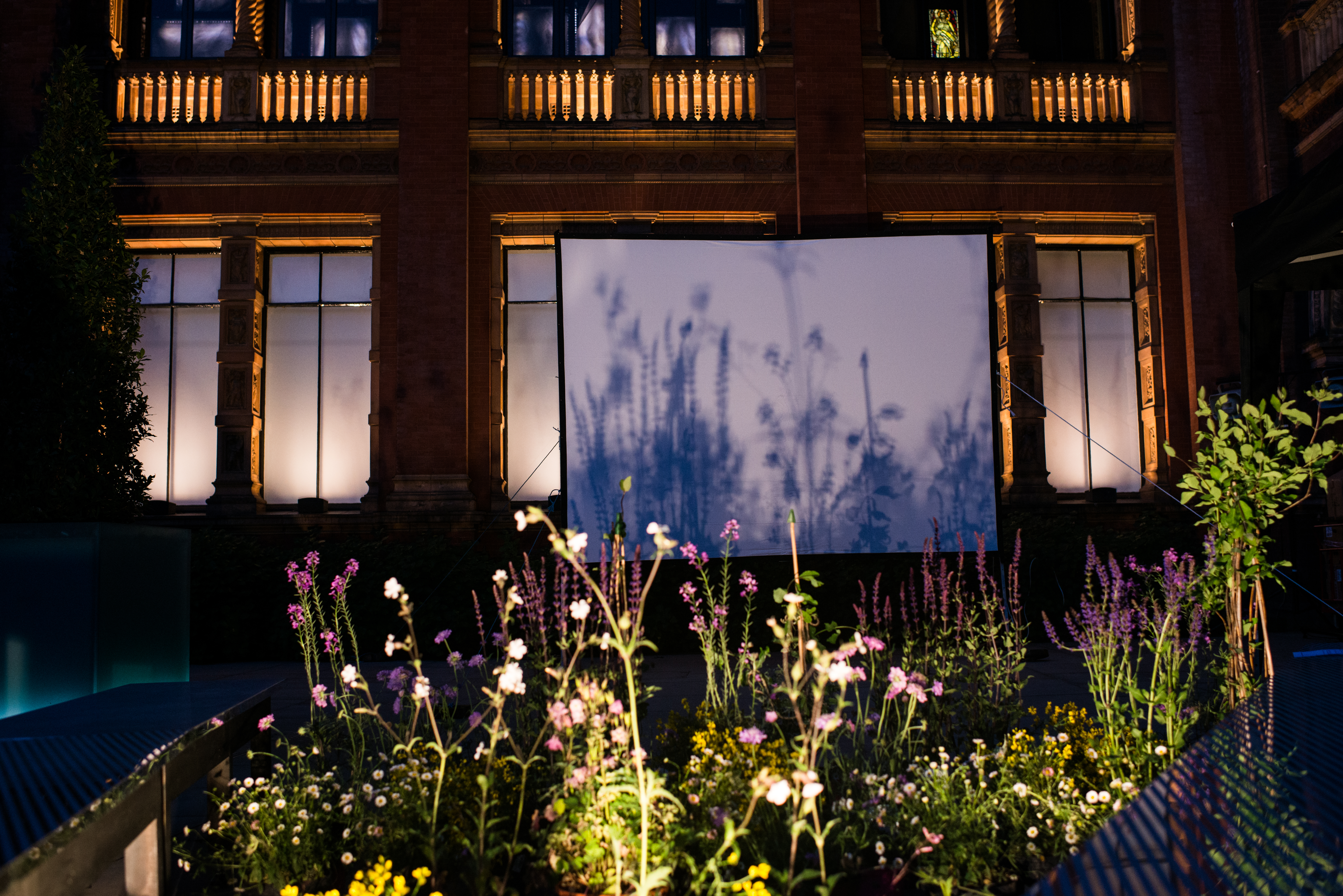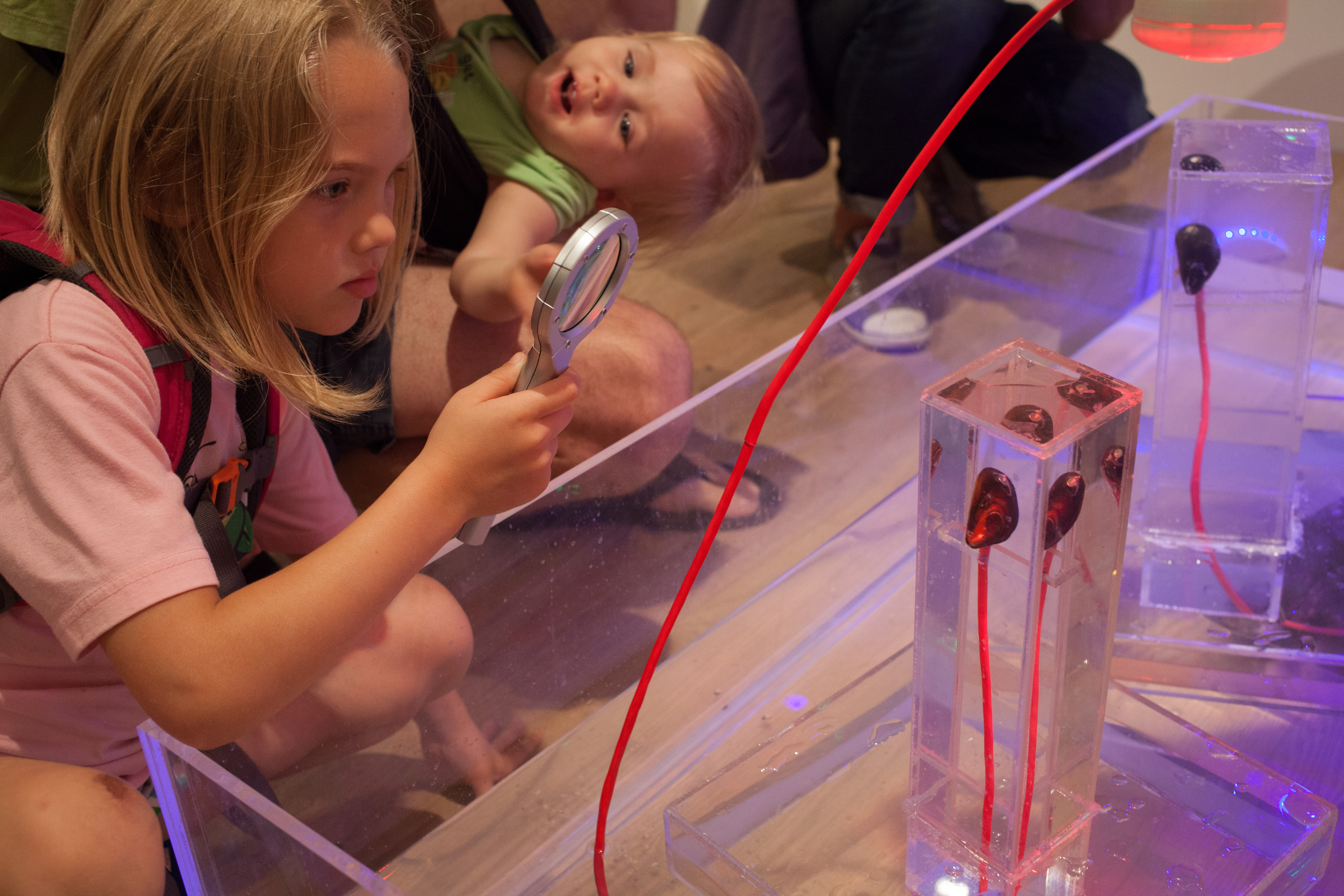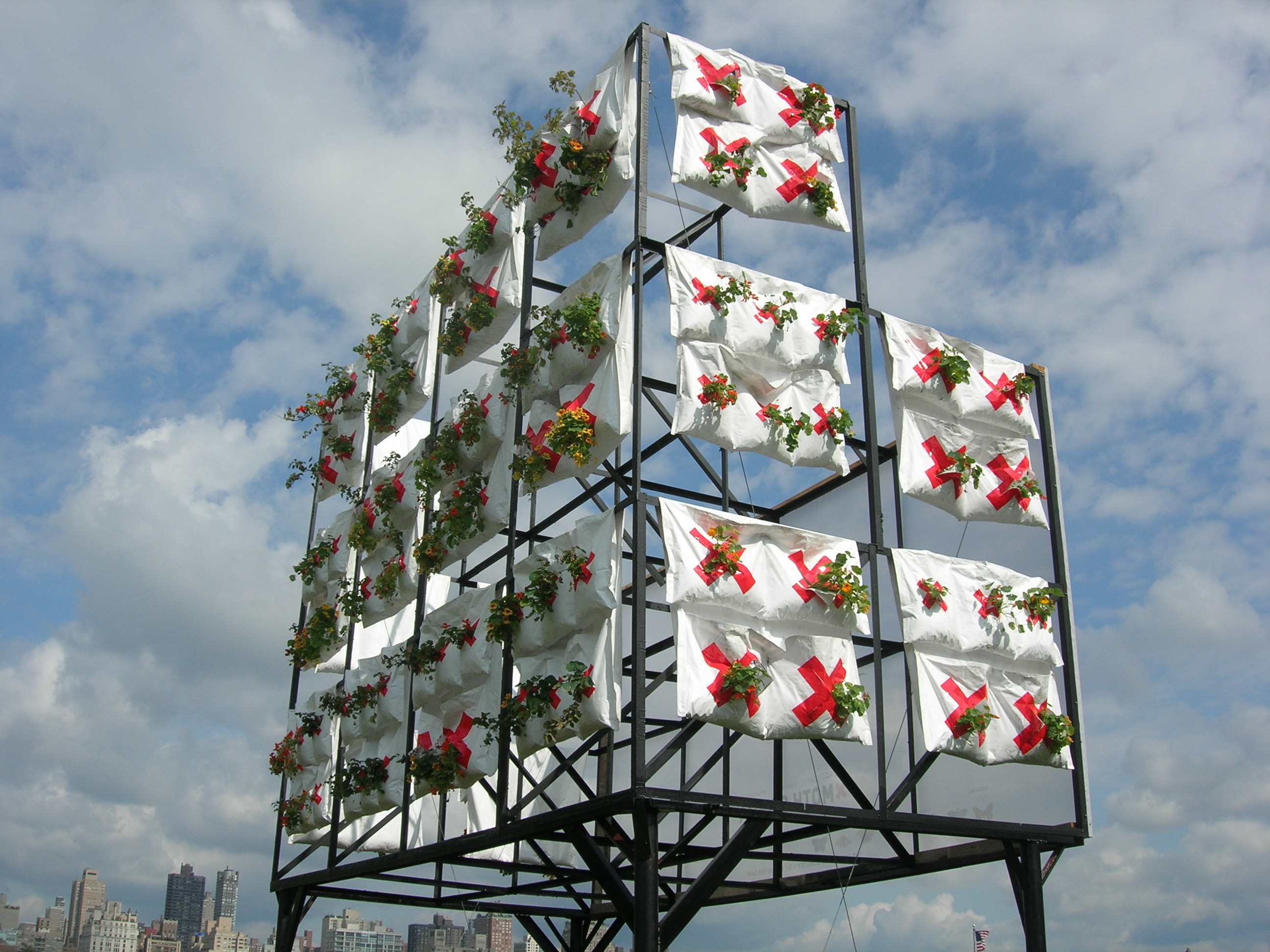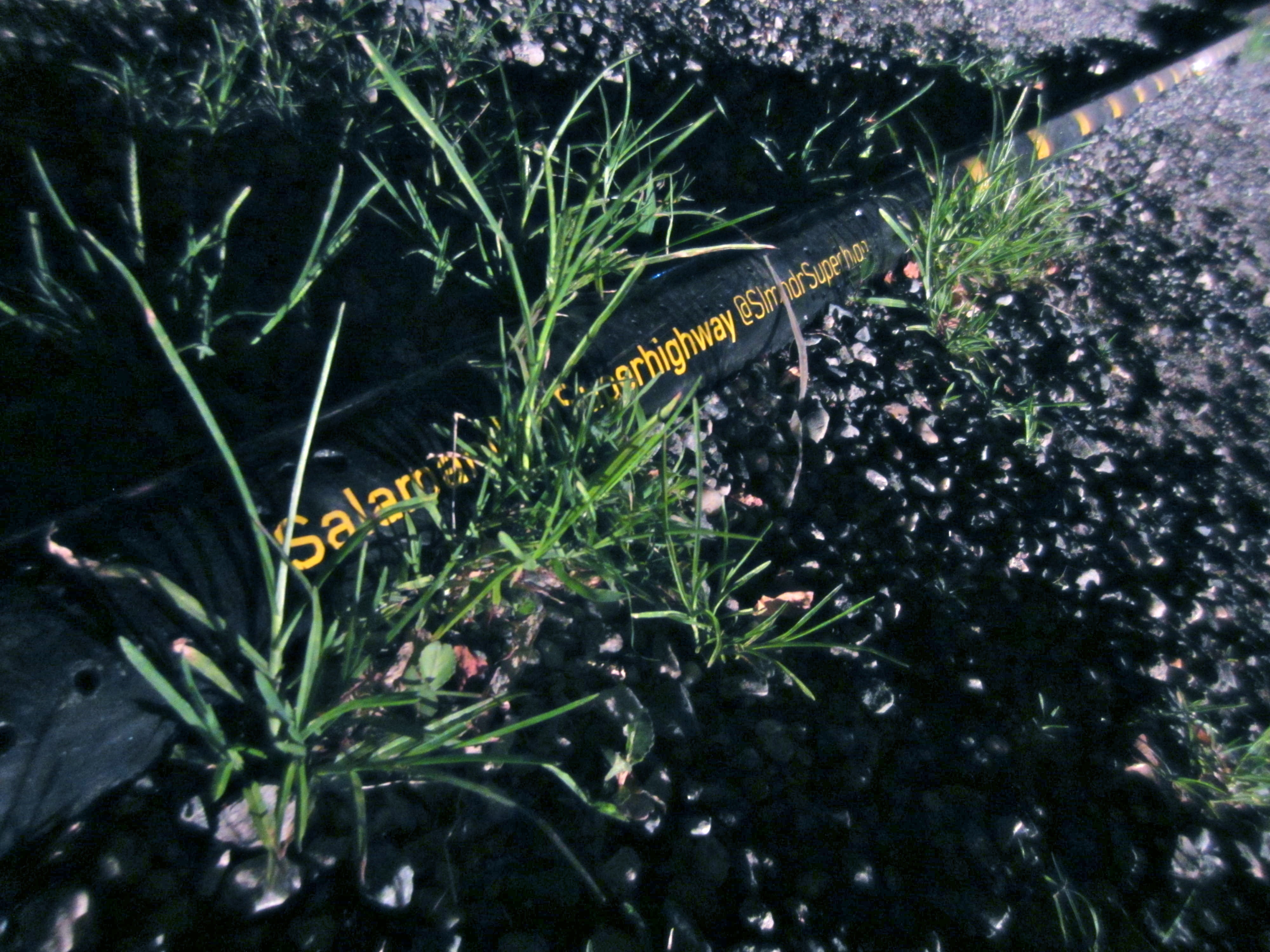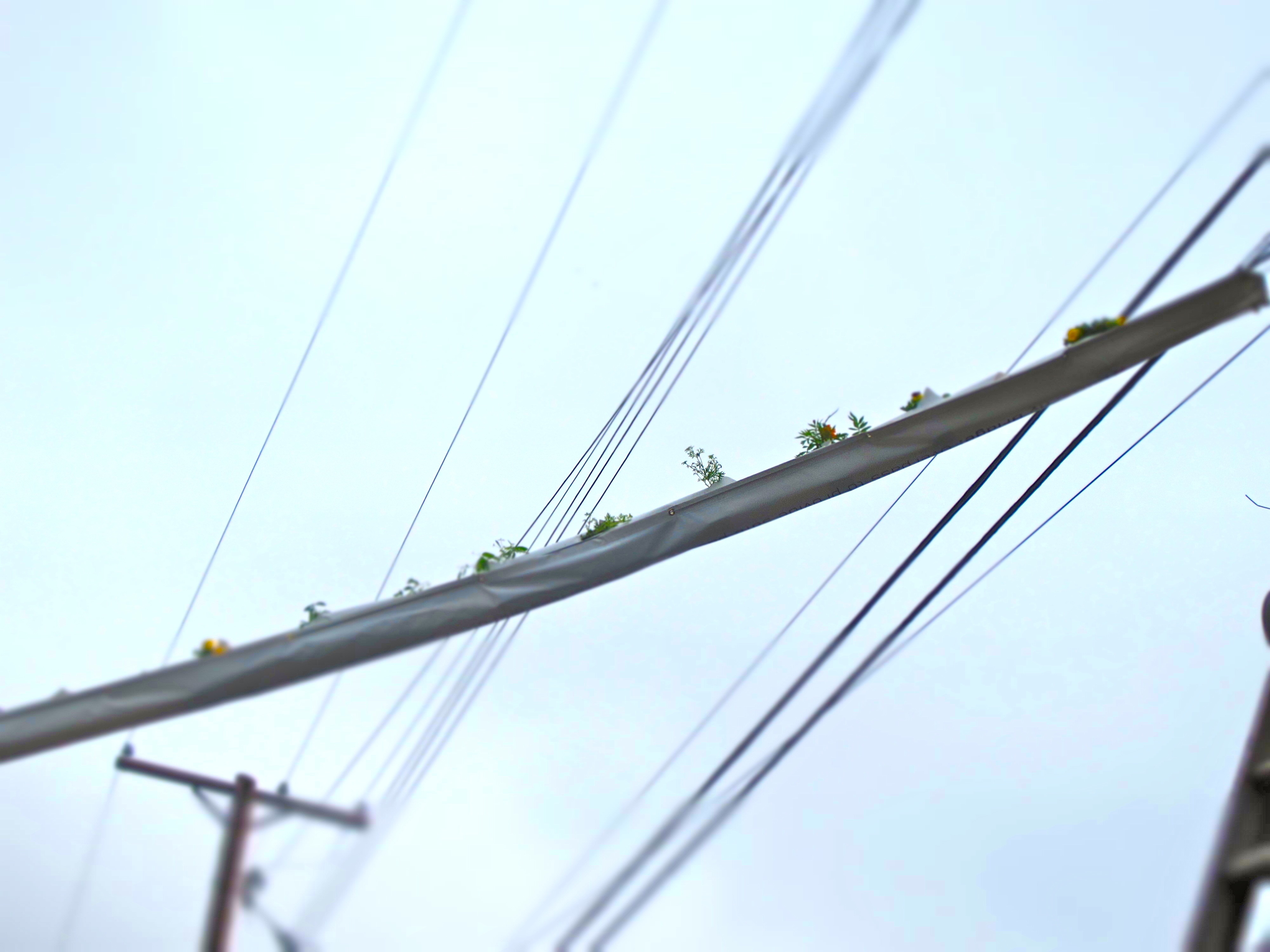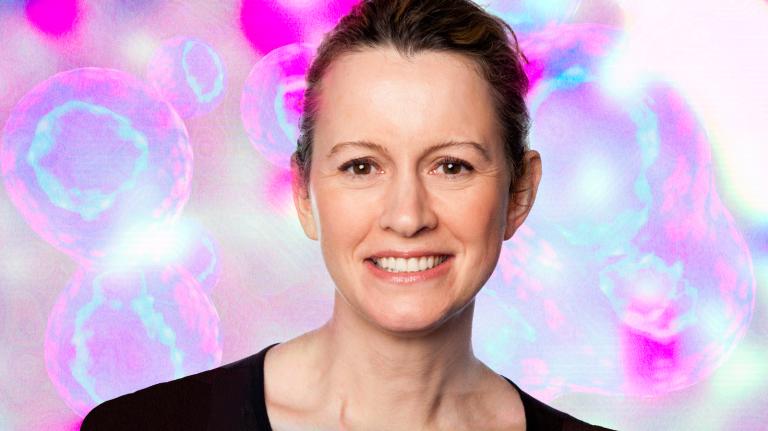Natalie Jeremijenko took the stage in black platform shoes, silver hot-pants, and a dark, snug blazer. She had a cutout of a red “x” on her white t-shirt, no tie, and straight blonde hair tucked behind her ears. Facing the few dozen Seattle Art Fair attendees gathered to hear her speak, she got right down to business:
“The project that I’m engaged in is re-imagining our relationship to natural systems, which I would argue is the space race of the 21st century.”
An associate professor of visual art at New York University, Jeremijenko has built a career that — to put it lightly — is a bit difficult to explain. Originally from Australia, she studied biochemistry and physics in college, then went to graduate school three times, taking courses in mechanical engineering, history and philosophy of science, neuroscience, and evolutionary theory, before finally earning a PhD in computer science and electrical engineering from the University of Queensland in the early 2000s.
Today, Jeremijenko works as an artist, designer, technologist, and inventor. She travels the world, giving talks and working on projects that all lie somewhere between art installation and science experiment.
“My fundamental theme song,” she had told me over Skype a few weeks before the fair, “is: New technology is an opportunity for social and environmental change.”
[grist-related-series]
Indeed, her work involves all kinds of tech and gadgetry — sensors, wireless networks, robots, molecular gastronomy. For Jeremijenko, anything goes — “anything that’s wonderful and spectacular and interesting and lovely and delicious and desirable and enticing” — as long as the end result incorporates nature back into our lives in a mutually beneficial way.
Among her projects are the environmental health clinic with its red “x” logo designed to look like the Red Cross sign turned on its side, the Moth Cinema that doubles as a sanctuary, the electrostatic precipitator that turns pollution into pencils, and the chocolate “kissing frogs” that cover people’s lips in beneficial soil bacteria so that, with a simple kiss, they can inoculate real frogs against a deadly fungus.
Jeremijenko spoke about all of these and more at the art fair, giving the audience a whirlwind tour of her portfolio. Earlier, she’d told me that there’s too much “dick swinging” and “rampant extrapolation” when it comes to talking about the future of technology, so she prefers to focus on her work, rather than wax poetic about grand visions.
Still, by the time she had to make way for the next speaker, it seemed like she’d barely scratched the surface of what she had to say, so I hung around after to chat. When she emerged from the small crowd of hang-abouts waiting to ask follow-up questions, looking somewhat dazed, she asked if I’d like to walk and talk — she’d only just arrived at the fair and wanted to look around.
We zipped up to the nearest painting, and Jeremijenko leaned in to read the description. Then, twirling back around abruptly, she said she had to go. She only had 24 hours in Seattle, after all, and there were people to see and projects to plan.
And so, in the spirit of getting down to business, here’s a sampling of Jeremijenko’s work:
The Tree Office
Inspired by The Tree That Owns Itself — a white oak in Atlanta, Georgia, that Colonel William Jackson deeded to itself in 1832 — Jeremijenko created these co-working spaces that are effectively owned and operated by the very trees that house them. The concept is part of the broader rights of nature movement, which posits that others in the natural world deserve legal rights, just like us.
Constructed of grated, sliding, and transparent surfaces that protect users from the elements without cutting them off from nature, tree offices have on-site power generation and wi-fi, and they use sensors to self-monitor and track user engagement.
Tree office users pay a membership fee, and all profits go directly toward improving the tree’s well-being: improving soil health, increasing pollinator access, sending the tree’s saplings off to college. No, seriously — Jeremijenko sent saplings from a tree office in the Socrates Sculpture Park in Long Island City, N.Y., to NYU, Rutgers, and Cornell (unfortunately, the NYU sapling flunked out).
Earlier this year, Jeremijenko installed a tree office in London (above) that charges 25 pounds for four hours of use — not bad as far as London workspaces go, Jeremijenko said. That tree, which will soon be offering cloud data storage, is named Rupert, after the local arborist. Rupert (the person) typically gets about 60,000 pounds per year to take care of roughly the same number of trees, Jeremijenko said. At one pound per tree per year, that’s not a lot — especially when you compare it to what Rupert (the tree) stands to make as an independent entity.
In preparation for the COP21 climate talks this December, Jeremijenko is trying to get new tree offices up and running in Boulder, Colo., Burlington, Vt., and Melbourne, Australia. She’s also seeking approval for one in San Francisco. Holding discussions about the environment and sustainability in self-owned tree offices is a much more fun and imaginative form of political participation than signing petitions or waving cardboard signs, she said.
The Moth Cinema
Put a garden in the middle of a city, and you have a nice green space. Nestle a bright light in the middle of that garden, and you have a hot new moth hangout. Direct that light at a big blank screen to display the moths’ shadows, and you have the Moth Cinema.
“Instead of being bedazzled and fried,” Jeremijenko said, “the moths find a moth garden with native plants and host plants so that they bounce around, casting dramatic shadows, playing out their nightly dramas, their love triangles, their adventures.”
Every moth cinema features two nocturnes — one that humans can hear and one in the ultrasonic spectrum that moths and bats can hear. By scrambling bats’ ultrasound, Jeremijenko said, the moth cinema creates a safe haven for city moths.
Check out this video to see Jeremijenko talk about the moth cinema that she installed in New York back in 2013. She also had one on display at the Victoria and Albert Museum in London earlier this year.
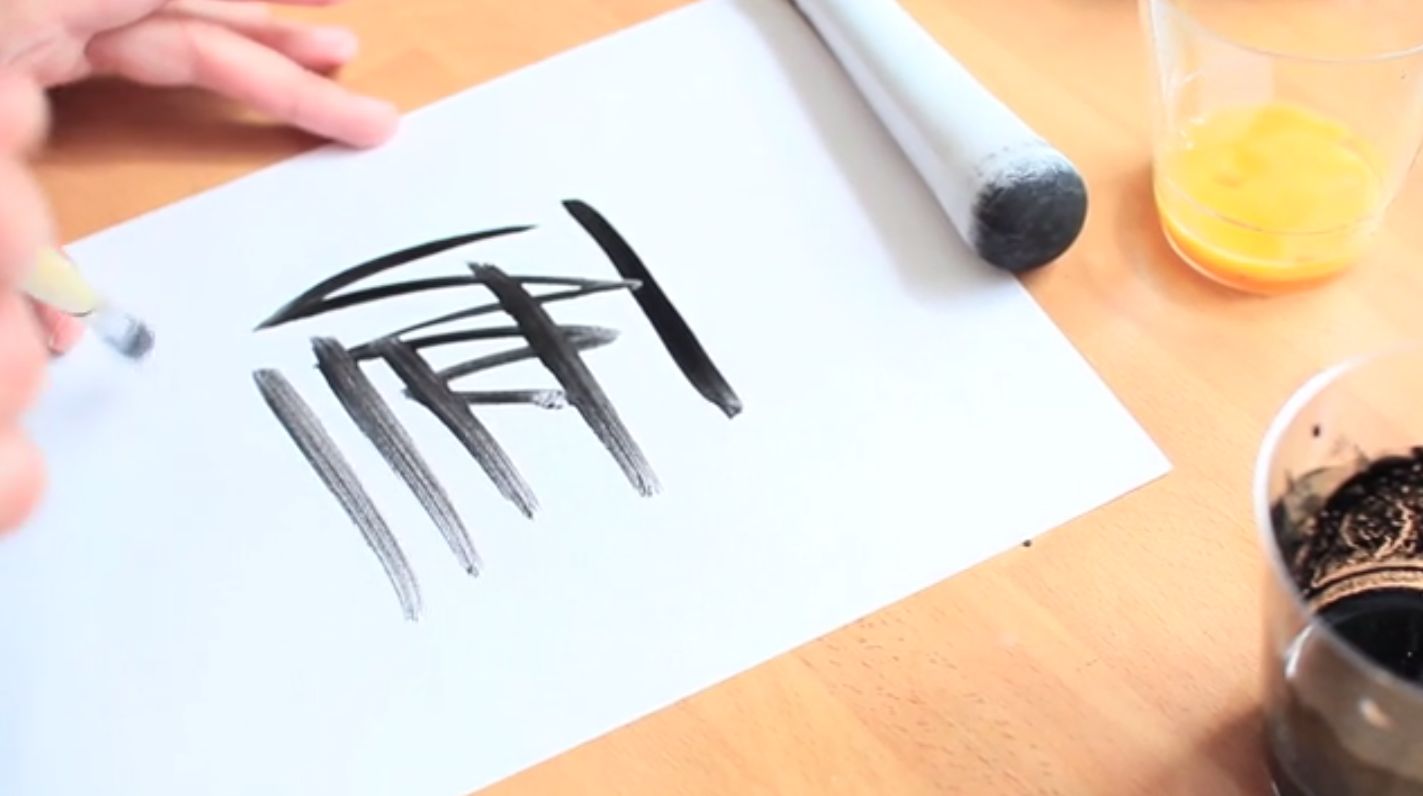
Ink made from black carbon GyorgyiGalik / vimeo
Pollution Pencils and Ink
Using something called an electrostatic precipitator, Jeremijenko and collaborators devised a way to pull black carbon out of polluted urban air and turn it into ink and pencils. Jeremijenko said that by representing the pollution levels in physical form, she’s able to avoid the “data spectatorship” that occurs with passive, sensor-based pollution monitoring.
At the art fair, Jeremijenko asked the audience to tweet at the New York Metro Transit Authority to ask for a black carbon pencil from the Midtown Tunnel, hoping that the requests would push the MTA to let her install one of her electrostatic precipitators in the tunnel. She’s previously used them in London and Germany.
The Mussel Choir
Mussels are not only a tasty meal; they’re also great water filters. To highlight this beneficial behavior, Jeremijenko glued sensors onto mussels’ shells and, by assigning their movements to musical notes, translated their filtering behavior into music.
The first mussel choir single was “Bicycle Built for Two,” which Jeremijenko chose because of its iconic status in the artificial intelligence community. IBM had its first computer synthesized voice sing the song back in the 1960s. In addition to displaying some of these tricked out mussels in museums, Jeremijenko has tested the technology on mussels in the Melbourne Docklands and along the New York City shoreline.
The Farmacy
These hanging planters, which Jeremijenko calls “agbags”, can turn any railing, double-hung window, or parapet into arable space. Emblazoned with the red “x” of Jeremijenko’s environmental health clinics (like regular health clinics, except people leave with prescriptions for ways to improve their environments) these soil-filled planters can increase the green canopy on a given block tenfold, improve air quality, and provide food for the neighborhood.
“This is really about food systems innovation,” Jeremijenko said. “What do you grow in an urban environment that is high nutrition value, high commercial value, highly perishable, and non-distributable?” To Jeremijenko, the answer is flowers. We don’t normally think of flowers as food, Jeremijenko said, but they’re highly nutritious, and they promote biodiversity and support pollinators.
Plus, she said, installing and maintaining agbags on the sides of buildings can be exciting. “It’s much more fun to rappel while you’re farming than it is to do it on your hands and knees.”
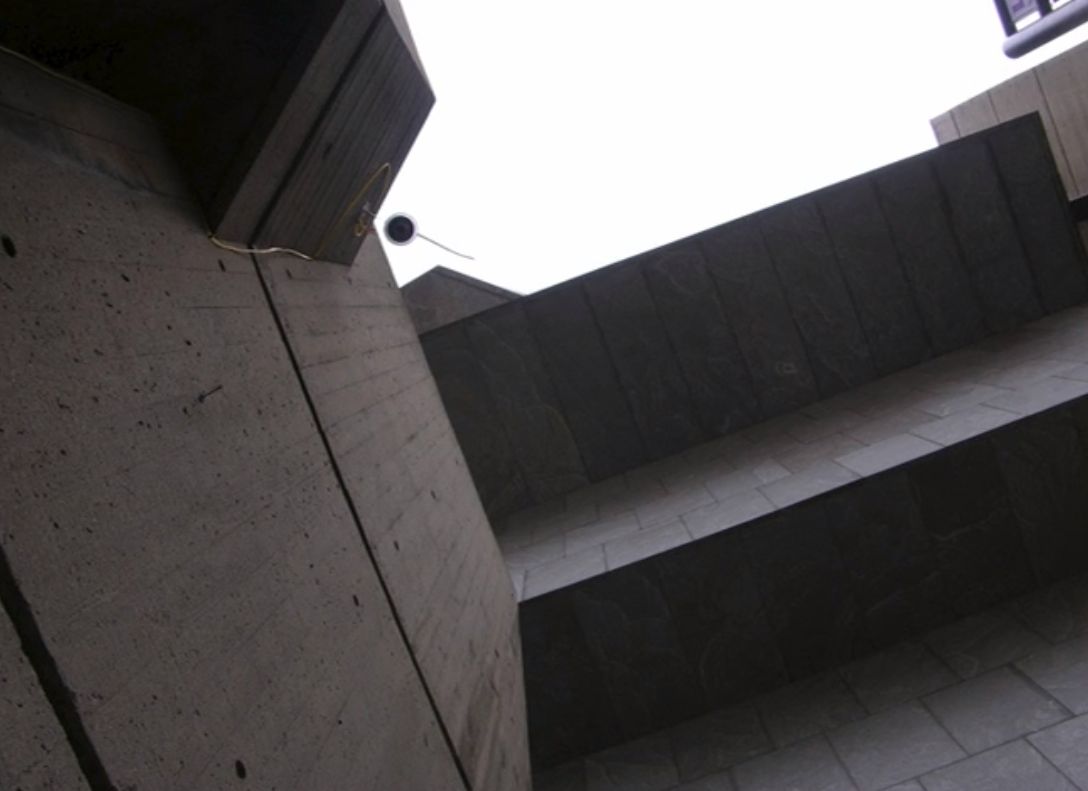
The view from below one of the bird perches Jeremijenko installed at the old Whitney Museum for her exhibit “For the birds.”TED
Talking Bird Perches
This temporary installation at the old Whitney Museum sculpture court gave the birds of NYC a voice. More specifically, it gave them the voice of a nefarious-sounding British man. When birds landed on the perches, the voice would say things like:
“Here’s what you need to do: Go down there and buy some of those health food bars — the ones you call bird food — and bring it here and scatter it around. There’s a good person.”
Or:
“Tic, tic, tic: That’s the sound of genetic mutations, of the avian flu becoming a deadly human flu. Do you know what slows it down? Healthy subpopulations of birds, increasing biodiversity generally. It is in your best interests that I’m healthy, happy, well-fed. Hence, you could share some of your nutritional resources, instead of monopolizing them. That is, share your lunch.”
That second one was the birds’ favorite, Jeremijenko said. Her favorite was one that demanded copyright dues for all the melodic inspiration that birds provide for our ringtones and music.
The Salamander Superhighway
Amphibians are in the midst of an extinction crisis. Their numbers have been on the decline since the 1980s, and now, more than a third of amphibian species are about to go the way of the dinosaurs. So to make urban environments at least somewhat safer for these little guys, Jeremijenko built this tube to provided them safe passage across a busy road. To attract the salamanders, Jeremijenko put a large black arrow at the entrance of the tube to make the ground slightly warmer than the surrounding area. She also placed little holes along the tube to mimic the kind of spotty lighting that salamanders are used to in the wild.
Jeremijenko designed these “micro-speed bumps” to connect salamander habitats and draw attention to the other organisms using human infrastructure. She also installed sensors in the tube to detect movement, so when a salamander used the superhighway, a twitter account would tweet things like “Hi, honey. I’m heading home,” “Why would the salamander cross the road…,” “Mmmm …. nice and moist, lit just like a forest on my migration routes of yore,” and “What comes first: the salamander or the migration route?”
She installed the salamander superhighway in New York’s Socrates Sculpture Park back in 2012 as part of an exhibit called Civic Action: A Vision for Long Island City.
The Butterfly Bridge
Also part of the Socrates Sculpture Park exhibit, this flower-lined overhang was designed to draw butterflies away from traffic so they wouldn’t end up smeared across windshields. By providing a safe way for butterflies to move around urban environments, Jeremijenko said, these bridges could increase biodiversity and connect otherwise isolated ecosystems.
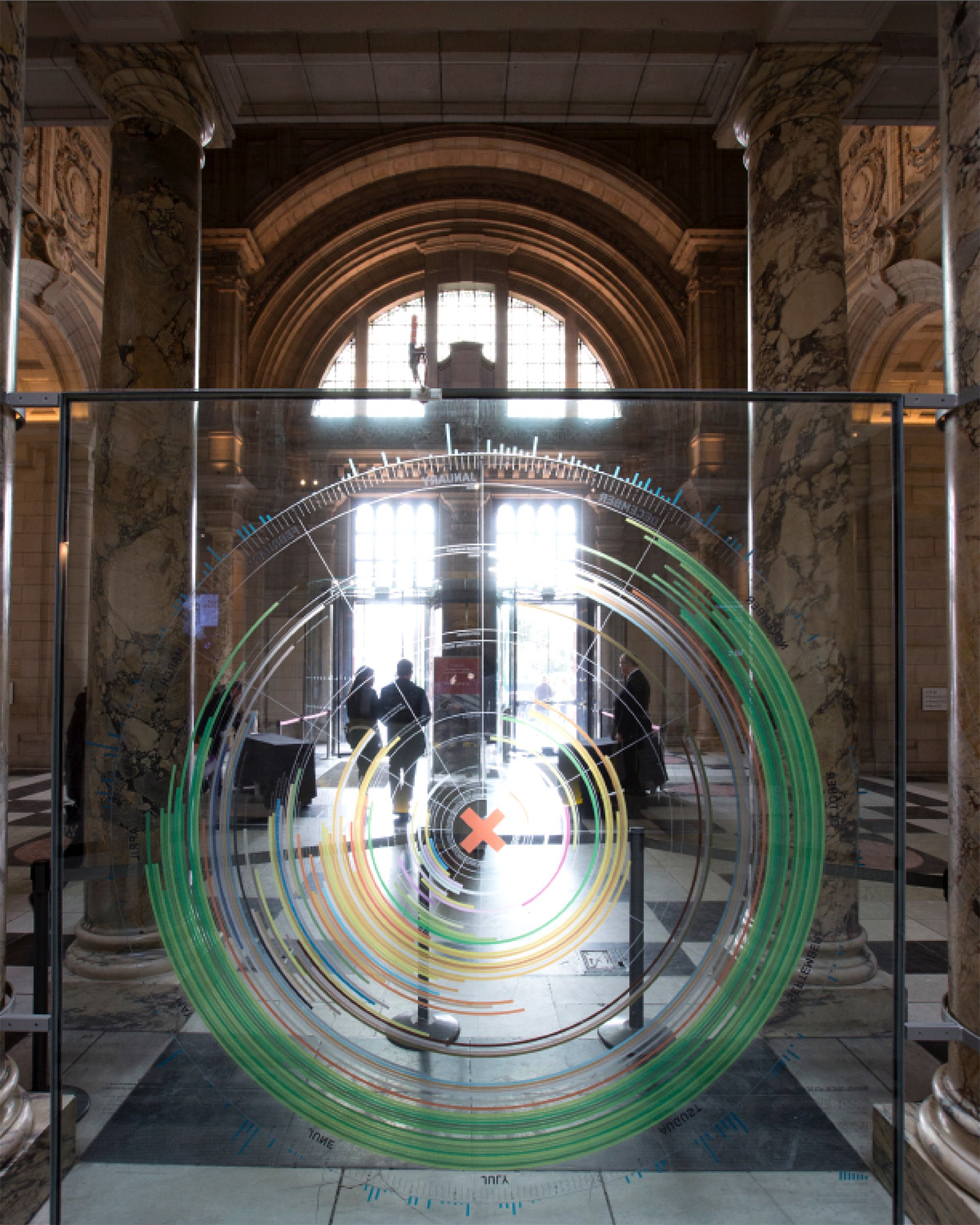
Phenological clockCourtesy of Natalie Jeremijenko
The Phenological Clock
On display at the Victoria and Albert Museum in London, this clock conveys time not as linear and mechanistic, but as seasonal. Each circle represents the yearly cycle of a plant, insect, bird, or tree as it buds, blooms, migrates, or pollinates.
“We’re representing time not as everywhere and nowhere, blank, always the same, but as seasonal,” Jeremijenko said, “and frankly that’s how we experience time.”
The clock is a way to visualize the mutualistic relationships among species in the natural world. About halfway through her talk at the art fair, Jeremijenko paused to ask the audience a question: What percentage of the world’s biomass consisted of symbiotic organisms? The answer, she said, was 95 percent.
“I studied a lot of evolutionary theory and philosophy of biology, and I never learned that,” she told the audience. But now, she said, this interdependency is a “fundamental and important idea” in her work.

